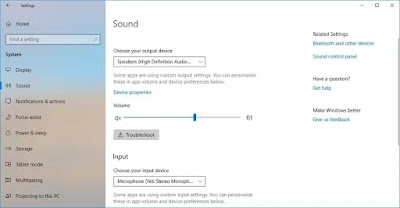Introduction:
Are you looking to enhance your audio experience on Windows 11? Sound equalization is a fantastic tool that allows you to fine-tune your sound output to match your preferences. In this comprehensive guide, we'll explore ten effective methods to enable sound equalization on your Windows 11 system. Whether you're a music enthusiast, a gamer, or simply someone who enjoys crisp audio, these steps will help you optimize your sound settings for an immersive experience
Understanding Sound Eqalization:
Sound equalization is the process of adjusting the balance between different frequencies in audio output. By boosting or reducing specific frequencies, you can tailor the sound to suit your preferences and the environment you're in. Whether you want to enhance bass for a booming movie experience or clarify vocals for better speech intelligibility, sound equalization gives you the power to customize your listening experience.
Method 1: Using Windows Sound Settings:
Windows 11 offers built-in sound equalization features that are easy to access and configure. Simply navigate to the sound settings menu, locate the equalizer options, and adjust the sliders to your liking. This method provides a quick and straightforward way to enhance your audio without installing any additional software.
Method 2: Configuring Equalizer Settings in Audio Drivers:
Many sound cards and audio devices come with their own drivers that offer advanced equalization options. By accessing the audio settings through your device manager or control panel, you can fine-tune the equalizer settings to achieve the perfect sound balance.
Method 3: Installing Third-Party Equalizer Software:
For more advanced equalization capabilities, consider installing third-party equalizer software. There are many free and paid options available, each offering a range of features to suit different needs. From parametric equalizers to graphic equalizers, these software packages provide extensive control over your audio output.
Method 4: Utilizing Media Player Equalization:
Most media players come with built-in equalizer settings that allow you to adjust the sound output for individual files or playlists. Whether you're listening to music, watching videos, or playing games, these equalizer settings can enhance your audio experience without affecting system-wide settings.
Method 5: Employing Sound Enhancements in Accessibility Settings:
Windows 11 includes accessibility features that can improve sound quality for users with hearing impairments. These features include sound enhancements such as loudness equalization, which boosts quieter sounds and reduces louder ones to create a more balanced listening experience.
Method 6: Customizing Sound Profiles with Audio Control Panels:
Some audio devices come with dedicated control panels that allow you to create custom sound profiles for different scenarios. Whether you're gaming, watching movies, or listening to music, you can create presets that optimize the sound settings for each activity.
Method 7: Adjusting Sound Settings in Specific Applications:
Many applications, including video games and multimedia software, allow you to customize sound settings independently of your system settings. Take advantage of these options to tailor the audio experience to suit the specific requirements of each application.
Method 8: Exploring Advanced Equalization Techniques:
For audiophiles and sound enthusiasts, there are advanced equalization techniques that go beyond simple frequency adjustments. Techniques such as room correction and convolution reverb can drastically improve sound quality by compensating for acoustic anomalies and simulating realistic audio environments.
Method 9: Utilizing Equalization Plugins for Media Players:
Some media players support plugins that extend their functionality, including advanced equalization capabilities. By installing equalization plugins, you can enhance the sound quality of your media player and achieve a more immersive listening experience.
Method 10: Creating Presets for Different Audio Scenarios:
To streamline your sound equalization process, consider creating presets for different audio scenarios. Whether you're watching movies, playing games, or listening to music, having preconfigured settings can save you time and effort while ensuring optimal sound quality.
Conclusion:
Enabling sound equalization on Windows 11 opens up a world of possibilities for customizing your audio experience. By following the methods outlined in this guide, you can take full control of you
r sound settings and enjoy immersive audio across all your activities. Whether you're a casual listener or a seasoned audiophile, these tips will help you get the most out of your Windows 11 sound system. So why wait? Dive in and start optimizing your audio today!




.png)
.png)


.png)
.png)



0 Comments